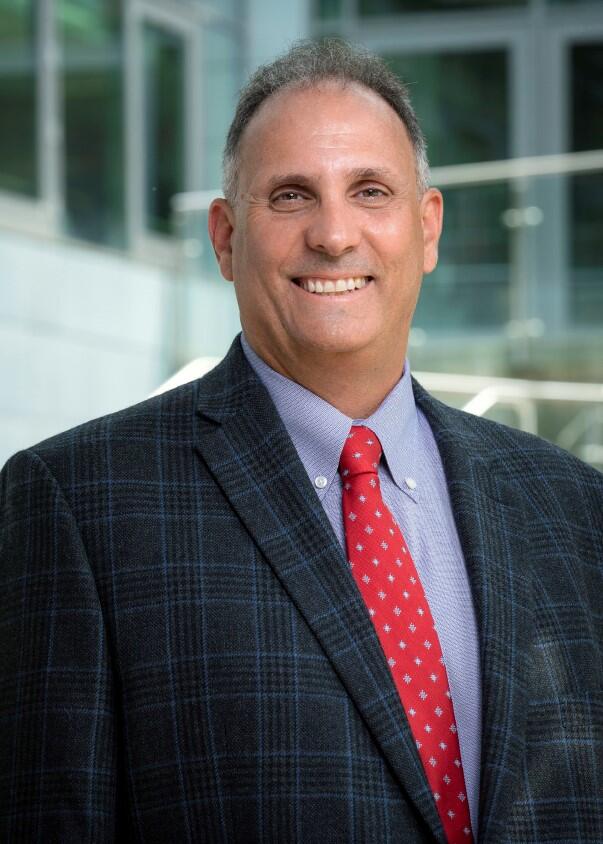Admission CTAs
Dean's Blog: Time to choose
What do NFL teams and graduating seniors have in common?
This past week, both analyzed and agonized over a series of decisions that could determine their successful future. After years of hard work, dedication, and sacrifice, it was time to transition to the ‘next level.’
The National Football League held their annual draft, when aspiring professional athletes sat poised on social media to capture the moment of ‘the call’ which would tell them what team had selected them for their roster. Some knew where they wanted to go, while other athletes had to wait through all seven rounds to see which city they’d be calling home.
Likewise, on May 1, across the country, high school seniors had to make their own selection. It was College Decision Day. Each had to choose which university could provide the academic and community forming experiences to best position them on the professional path of their dreams. This year was especially challenging; the graduating class of 2022 spent two of its four high school years in pandemic mode. Some took the big tests while others decided to go ‘test optional’ to identify their opportunities. It made the application pool even murkier and the decision even more important.
Such stress. Tremendous pressure. But wait, there’s another interesting relevancy in this analogy.
What if I said that students have the potential to be the greatest, wherever they might choose to learn, as long as the support team was just as fully committed to ALL students’ success as they were.
Athletes and students could share the mindset—‘I will be my best self wherever I go.’ I need to find the place that is the best fit for me. A place that has the right respectful, inclusive, and nurturing learning environment. Just ask one of the NFL’s greatest quarterbacks of all time, Tom Brady.
Tom Brady had a solid career playing football at the University of Michigan. But no one picked him the first day of the draft. Nor the second round of the draft. He was selected in the third round by the New England Patriots. And he decided he’d make his mark there. Perhaps in his mind he said, ‘I’ll show those teams who didn’t pick me what they passed up.” Or maybe he just said, “These teams don’t validate who I can be as a player—I do.” Ideally, he had achieved a milestone on his path to success. I’m a pro football player and now it’s time to learn and work to be great. (An aside, I don’t know Tom Brady and I don’t know what he thought).
However, people who follow the sport know, he very quickly established his ability, making the most of the supportive environment and opportunities he had. The coaching staff and team worked together with him in a partnership to build a football dynasty. Brady led the Patriots to many championships, winning Superbowl after Superbowl along the way.
OK, data lovers, here’s what you’ve been waiting for: Both sports and education have their stats. What are the odds? According to sports website, sportskeeda, “There are 1,093,234 high school football players in the United States, and 6.5% of those high school players (or 71,060) will play for the NCAA in college. The drop-off from college to the professional level is more dramatic: only 1.6% of college-level players will get drafted into the NFL.
Even then, being a successful professional athlete is yet another barrier to tackle. In short, roughly 853 players (0.00075%) make the pros each year out of an original population of nearly 1.1 million high school athletes.
To put that number into perspective, that is about the odds of getting struck by lightning at some point in life.”
Here are the 2020 National Center for Education Statistics for schools in the US from around the same time period.
- About 19.4 million students attended colleges and universities in fall 2020 (source).
- 11.9 million students attended full time.
- 7.5 million students attended part time.
- 16.2 million students attended undergraduate programs.
- 3.1 million students attended graduate programs.
- 14.0 million students attended public institutions.
- 5.4 million students attended private institutions.
- 5.0 million students attended 2-year institutions.
- 14.1 million students attended 4-year institutions.
What were the characteristics of students who were enrolled in U.S. colleges and universities in fall 2020?
- 11.4 million female students (source)
- 8.0 million male students
- 9.5 million White students
- 3.6 million Hispanic students
- 2.3 million Black students
- 1.3 million Asian students
- 0.7 million students of Two or more races
- million American Indian/Alaska Native students
- 47,600 Native Hawaiian or Other Pacific Islander students
- 0.8 million Nonresident students (not identified by race/ethnicity)
- 0.9 million students for whom race/ethnicity was unknown
And scroll through our annual report to see the Mason Science Stats from the same period. Mason subscribes to a value of inclusivity, offering transformative learning opportunities for those who seek them.
High schoolers are in the same boat as the drafted athletes. It’s not really about which school accepts you. Its about which school accepts and values you along your journey. Granted, if Mason Science is your dream school and you were accepted and chose to attend, congratulations. We will work diligently to fulfil our end of the deal and do our part to help all of our students succeed.
So, when it comes to Decision Day, really, it’s about the success mindset of the whole team (including the broader university environment and community) that is the true indicator of achieving one’s dreams. And if a student doesn’t land in the right place the first time, know that Mason Science is a supportive, safe place that transfer students can go to achieve their big dreams.
The Mason Science mantra: Understand. Innovate. Succeed. is our core values that apply to all of us—not just our students. It is the responsibility of our college, and all of the Mason Nation, to provide positive, quality, inclusive, and equitable experiences and environments. The inclusive excellence goal does not just fall on the student (or the athlete) alone. It is the collective obligation of us all. Each of us must bring our A-game to promote a safe, anti-racist, and inclusive environment for every learner who chooses Mason for their next level. As we celebrate our graduates this month, we can think of our participation in the upcoming commencement ceremonies and events like being the cheering crowd in the stands rooting for their Super Bowl victory.
FMW

